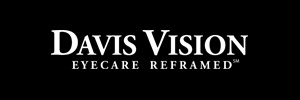People with refractive errors, such as astigmatism, nearsightedness, and farsightedness, need eyeglasses or contact lenses. These eye conditions can affect both children and adults. They can also progress as you age, causing your vision to change.

Read on to discover common reasons eye prescriptions change.
Age-Related Vision Changes
Myopia or nearsightedness can occur in children as young as six. If your child has this eye condition, it can worsen until their late teens or early 20s. On the other hand, hyperopia or farsightedness can improve at around age nine, once the eyes have developed.
Moreover, adults can also notice changes in their vision as they age. Older adults might need more illumination to read or see well. Presbyopia is an eye condition that usually affects individuals 40 and older. Do you need to hold print materials at arm’s length to see them clearly? If so, you should visit your optometrist. You might need to update your glasses or contacts if you have presbyopia.
Eye Diseases
Glaucoma, cataracts, macular degeneration and diabetic retinopathy are some of the most common eye conditions that can cause vision loss. Without early intervention and proper treatment, they can lead to blindness. Unfortunately, the symptoms of these conditions don’t manifest right away. It’s why you should regularly see your eye doctor. How often you need to see your eye care provider depends on your age and pre-existing medical or eye condition.
Are you experiencing headaches every time you wear your glasses or contacts? Do you often squint when trying to read or do close-up tasks? These are typical signs you need to get an eye exam. When it’s time to update your prescription eyewear, turn to Eyes on Norbeck. Call us at (301) 238-7199 or fill out our online form to schedule an appointment. We assist patients in Potomac, MD, and nearby communities.








